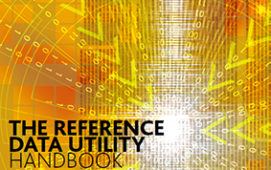Quincy Data has pushed further into Europe with the extension of its Quincy Extreme Data service to Frankfurt. The Frankfurt service distributes CME Group market data from the CME Aurora data centre in Chicago to the FR2 data centre in 37.79 milliseconds. The company has also lowered the latency of distributing CME Group data from Aurora to the LD4 data centre in Slough, west of London. This service was first offered in May 2013 at 36.40 milliseconds rack to rack, a latency that has been lowered to 35.39 milliseconds.
With the Quincy Extreme Data service established at LD4 to meet the needs of collocated trading firms and the Frankfurt service due to be ready for client use next week, Quincy plans to add more London points of presence over the next two months. It is also close to delivering a market data service that will distribute select data from Eurex to London, Chicago and a number of New Jersey collocation centres including NY2, NY4, Carteret, Piscataway and soon Mahwah.
Stephane Tyc, co-founder of Quincy Data, explains: “Quincy’s European expansion is our next phase in delivering a market data service that is fast, fair and flexible. It allows the lowest latency market data to be bought as a service, lowering barriers to entry and fostering competition.”
In terms of the need for speed, he adds: “When automatic trading systems have a decision cycle that is less than a few milliseconds, our data service becomes an obvious choice. With fibre, decisions are made on stale data. This practical and powerful arithmetic is driving mainstream adoption of the Quincy Extreme Data Service.”
To date, Quincy has delivered its low latency market data service in the US and Europe on the back of microwave and fibre networks built by partner company McKay Brothers, but the European expansion breaks with tradition to use microwave connectivity provide by an unaffiliated, unnamed telecoms carrier that initially developed a low latency microwave network for internal purposes. Tyc comments: “Quincy Data is always about being fastest to deliver market data. If McKay or another provider delivers faster paths, Quincy will want to upgrade.”
Quincy expects both existing and new customers with collocated automated trading strategies to benefit from its lowest latency services to and from Europe, and suggests that, over time and dependent on customer demand, it will extend the Quincy Extreme Data service to other European cities.
Subscribe to our newsletter




